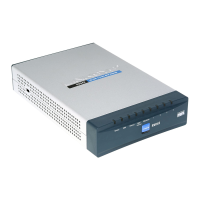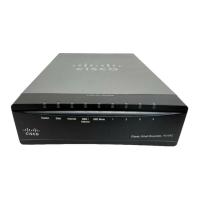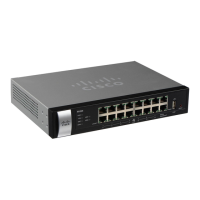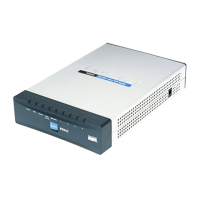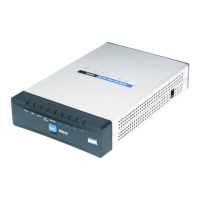VPN
Setting Up a Remote Access Tunnel for VPN Clients (Client To Gateway)
Cisco Small Business RV0xx Series Routers Administration Guide 143
9
IPSec Setup
Enter the Internet Protocol Security settings for this tunnel.
IMPORTANT: In order for any encryption to occur, the two ends of a VPN tunnel
must agree on the methods of encryption, decryption, and authentication.
• Keying Mode: Choose one of the following key management methods:
- Manual: Choose this option if you want to generate the key yourself and
you do not want to enable key negotiation. Manual key management is
used in small static environments or for troubleshooting purposes. Enter
the required settings. For information, see Required fields for Manual
mode, page 143.
- IKE with Preshared Key: Choose this option to use the Internet Key
Exchange protocol to set up a Security Association (SA) for your tunnel.
IKE uses a preshared key to authenticate the remote IKE peer. This
setting is recommended and is selected by default. Enter the required
settings. For more information, see Required fields for IKE with
Preshared Key, page 144 and Advanced settings for IKE with
Preshared Key, page 145.
• Required fields for Manual mode
Enter the settings for manual mode.
- Incoming / Outgoing SPI: The Security Parameter Index is carried in the
ESP (Encapsulating Security Payload Protocol) header and enables the
receiver and sender to select the security association, under which a
packet should be processed. You can enter hexadecimal values from
100~ffffffff. Each tunnel must have a unique Incoming SPI and Outgoing
SPI. No two tunnels share the same SPI. The Incoming SPI here must
match the Outgoing SPI value at the other end of the tunnel, and vice
versa.
- Encryption: Select a method of encryption: DES or 3DES. This setting
determines the length of the key used to encrypt or decrypt ESP
packets. DES is 56-bit encryption and 3DES is 168-bit encryption. 3DES
is recommended because it is more secure.
- Authentication: Select a method of authentication: MD5 or SHA1. The
authentication method determines how the ESP packets are validated.
MD5 is a one-way hashing algorithm that produces a 128-bit digest.
SHA1 is a one-way hashing algorithm that produces a 160-bit digest.
SHA1 is recommended because it is more secure. Make sure that both
ends of the VPN tunnel use the same authentication method.

